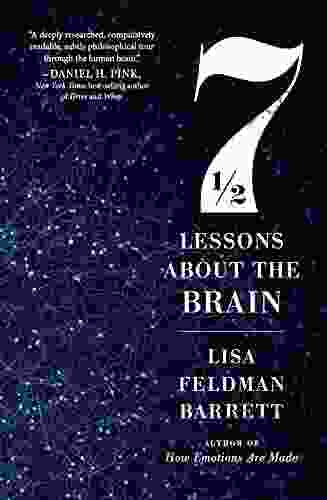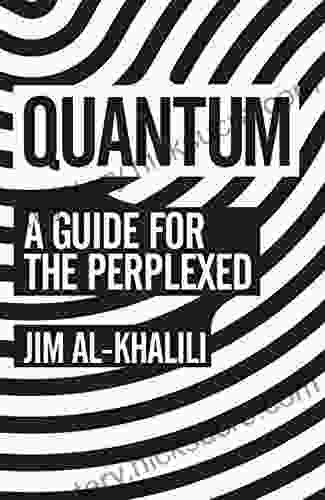Seven and a Half Lessons About the Brain: Understanding the Neuroscience of Everyday Life

4.5 out of 5
| Language | : | English |
| File size | : | 6703 KB |
| Text-to-Speech | : | Enabled |
| Screen Reader | : | Supported |
| Enhanced typesetting | : | Enabled |
| X-Ray | : | Enabled |
| Word Wise | : | Enabled |
| Print length | : | 193 pages |
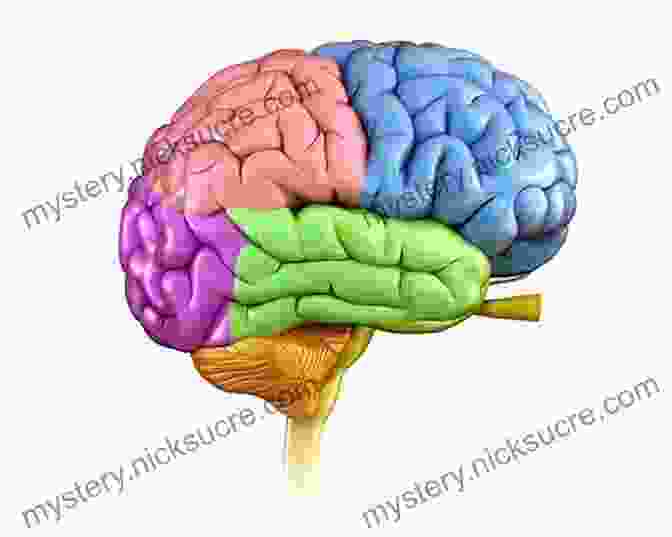
The brain is one of the most complex organs in the human body, and scientists are still learning about its many mysteries. But recent advances in neuroscience have given us a new understanding of how the brain works, and how it affects our everyday lives.
In her book Seven and a Half Lessons About the Brain, renowned neuroscientist Lisa Feldman Barrett explores the latest findings about the brain and how they can help us understand ourselves and others better. Barrett argues that the brain is not a passive organ that simply receives and processes information. Instead, the brain is an active organ that constantly constructs our reality based on our past experiences, our expectations, and our goals.
In this article, we will explore the seven and a half lessons that Barrett identifies in her book. These lessons provide a fascinating glimpse into the neuroscience of everyday life, and they can help us understand ourselves and others better.
Lesson 1: The Brain Is Not a Computer
One of the most common misconceptions about the brain is that it is like a computer. Computers are designed to process information according to a set of rules. The brain, on the other hand, is much more flexible and creative. It can learn new things, adapt to new situations, and make decisions even in the absence of complete information.
This flexibility is due to the fact that the brain is not a single, monolithic organ. Rather, it is a complex network of interconnected neurons. Each neuron is a specialized cell that communicates with other neurons through electrical and chemical signals. The brain's structure allows for a vast number of possible connections between neurons, which in turn gives it the ability to process information in a highly complex and efficient manner.
Lesson 2: The Brain Constructs Reality
The brain does not passively receive information from the outside world. Instead, it actively constructs our reality based on our past experiences, our expectations, and our goals.
This process of construction begins in the sensory organs. When light enters our eyes, for example, the retina converts the light into electrical signals that are sent to the brain. The brain then interprets these signals to create a visual image of the world.
But the brain's interpretation of the world is not always accurate. Our past experiences, our expectations, and our goals can all influence how we perceive the world. For example, if we are afraid of heights, we may perceive a balcony as being higher than it actually is.
The brain's ability to construct reality is a powerful tool. It allows us to adapt to our environment and to achieve our goals. But it also means that our perceptions of the world can be biased and distorted.
Lesson 3: Emotions Are Not Hardwired
One of the most common assumptions about emotions is that they are hardwired into the brain. According to this view, emotions are automatic responses to external stimuli. For example, we might assume that we are programmed to feel angry when we are threatened, or happy when we are rewarded.
However, research has shown that emotions are not hardwired. Instead, they are constructed by the brain based on our past experiences, our expectations, and our goals.
This means that emotions are not universal. They vary from person to person, and they can even change within the same person over time. For example, a person who has been traumatized may learn to associate certain objects or situations with danger, and this can lead them to experience fear or anxiety in response to those stimuli.
The brain's ability to construct emotions is a powerful tool. It allows us to adapt to our environment and to achieve our goals. But it also means that our emotions can be biased and distorted.
Lesson 4: The Self Is Not Fixed
The self is not a fixed entity. It is constantly changing and evolving, based on our experiences, our relationships, and our goals.
The brain plays a central role in the construction of the self. It integrates information from our senses, our memories, and our emotions to create a sense of who we are.
But the brain's construction of the self is not always accurate. Our past experiences, our expectations, and our goals can all influence how we see ourselves. For example, if we have been repeatedly criticized by our parents, we may come to believe that we are worthless.
The brain's ability to construct the self is a powerful tool. It allows us to adapt to our environment and to achieve our goals. But it also means that our sense of self can be biased and distorted.
Lesson 5: The Brain Is Social
The brain is not an isolated organ. It is deeply connected to other people. When we interact with others, our brains synchronize with theirs. This allows us to understand each other's thoughts and feelings, and to cooperate with each other.
The brain's social nature is evident in the way we learn. When we learn something new, our brains create new connections between neurons. These connections are strengthened when we repeat the same activity, and they are weakened when we do not.
When we learn something new with someone else, our brains synchronize with theirs. This helps us to learn more quickly and effectively. It also helps us to build stronger relationships with others.
The brain's social nature is a powerful tool. It allows us to learn from each other, to cooperate with each other, and to build strong relationships. But it also means that we are susceptible to social influence. We can be influenced by the opinions and behaviors of others, even when we are not aware of it.
Lesson 6: The Brain Is a Meaning-Making Machine
The brain is constantly seeking meaning in the world around us. We try to make sense of our experiences by fitting them into existing categories and patterns.
This process of meaning-making is essential for our survival. It allows us to predict the future and to make decisions about how to behave.
But the brain's search for meaning can also lead us to see patterns where there are none. We may see faces in clouds, or hear voices in the wind. This can lead us to make mistakes and to misunderstand the world around us.
The brain's ability to create meaning is a powerful tool. It allows us to make sense of the world around us and to make decisions about how to behave. But it also means that we are susceptible to illusions and false beliefs.
Lesson 7: The Brain Is Not Fully Formed
The human brain is not fully formed at birth. It continues to develop throughout childhood and adolescence. This means that our brains are highly adaptable and can learn new things throughout our lives.
The brain's plasticity is a powerful tool. It allows us to learn from our experiences and to adapt to new
4.5 out of 5
| Language | : | English |
| File size | : | 6703 KB |
| Text-to-Speech | : | Enabled |
| Screen Reader | : | Supported |
| Enhanced typesetting | : | Enabled |
| X-Ray | : | Enabled |
| Word Wise | : | Enabled |
| Print length | : | 193 pages |
Do you want to contribute by writing guest posts on this blog?
Please contact us and send us a resume of previous articles that you have written.
 Fiction
Fiction Non Fiction
Non Fiction Romance
Romance Mystery
Mystery Thriller
Thriller SciFi
SciFi Fantasy
Fantasy Horror
Horror Biography
Biography Selfhelp
Selfhelp Business
Business History
History Classics
Classics Poetry
Poetry Childrens
Childrens Young Adult
Young Adult Educational
Educational Cooking
Cooking Travel
Travel Lifestyle
Lifestyle Spirituality
Spirituality Health
Health Fitness
Fitness Technology
Technology Science
Science Arts
Arts Crafts
Crafts DIY
DIY Gardening
Gardening Petcare
Petcare Ron Rapoport
Ron Rapoport Leslie R Schover
Leslie R Schover Tim Freke
Tim Freke Lynette Noni
Lynette Noni Vladimir Lossky
Vladimir Lossky Lisa Feldman Barrett
Lisa Feldman Barrett Shawna Richer
Shawna Richer Valerie Poore
Valerie Poore John Kretschmer
John Kretschmer Sarah Prager
Sarah Prager Oliver Sacks
Oliver Sacks Emma Warren
Emma Warren Emily Lowry
Emily Lowry Jeffrey L Kohanek
Jeffrey L Kohanek Paige Powers
Paige Powers Wilhelm Reich
Wilhelm Reich Oprah Winfrey
Oprah Winfrey Skip Lockwood
Skip Lockwood Katie Fallon
Katie Fallon Jonathan T Gilliam
Jonathan T Gilliam Lingo Mastery
Lingo Mastery Sylvia Williams Dabney
Sylvia Williams Dabney Mcgraw Hill
Mcgraw Hill Leah Hazard
Leah Hazard Jim West
Jim West Ed Housewright
Ed Housewright Lew Freedman
Lew Freedman Joseph Moss
Joseph Moss Howard E Mccurdy
Howard E Mccurdy Janet Evans
Janet Evans Tim Glover
Tim Glover Graham Norton
Graham Norton Carole Bouchard
Carole Bouchard Caitlyn Dare
Caitlyn Dare Elizabeth Anne Wood
Elizabeth Anne Wood Nawuth Keat
Nawuth Keat Jennifer Appel
Jennifer Appel Bryce Carlson
Bryce Carlson Shelby Hailstone Law
Shelby Hailstone Law M E Brines
M E Brines Joanne V Hickey
Joanne V Hickey John R Mabry
John R Mabry Scott Mcmillion
Scott Mcmillion Vivian Foster
Vivian Foster Troy Horne
Troy Horne Cathy Glass
Cathy Glass Joseph Correa
Joseph Correa Dounya Awada
Dounya Awada Maxine A Goldman
Maxine A Goldman Sophie D Coe
Sophie D Coe John Burroughs
John Burroughs Bryan Litz
Bryan Litz Jim Wiese
Jim Wiese Db King
Db King Meriwether Lewis
Meriwether Lewis Issai Chozanshi
Issai Chozanshi James Beard
James Beard Carmen Davenport
Carmen Davenport Robert D Gibbons
Robert D Gibbons Robert A Cutietta
Robert A Cutietta Peter Bodo
Peter Bodo Christine Mari Inzer
Christine Mari Inzer Leah Zani
Leah Zani Fern Schumer Chapman
Fern Schumer Chapman Byron L Reeder
Byron L Reeder Phil Williams
Phil Williams Michael Blastland
Michael Blastland Ronit Irshai
Ronit Irshai Douglas P Fry
Douglas P Fry John Vince
John Vince Ronald T Potter Efron
Ronald T Potter Efron Roger J Davies
Roger J Davies David Wilber
David Wilber Bruce Watt
Bruce Watt Huberta Wiertsema
Huberta Wiertsema Barbara Acello
Barbara Acello Jeff Belanger
Jeff Belanger Sheila A Sorrentino
Sheila A Sorrentino E W Barton Wright
E W Barton Wright Dr Monika Chopra
Dr Monika Chopra Niels H Lauersen
Niels H Lauersen Don Allen Jr
Don Allen Jr Fmg Publications Special Edition
Fmg Publications Special Edition Konstantinos Mylonas
Konstantinos Mylonas Dave Bosanko
Dave Bosanko Nicholas Tomalin
Nicholas Tomalin Zachery Knowles
Zachery Knowles Bruce Sutherland
Bruce Sutherland Richard C Francis
Richard C Francis Kindle Edition
Kindle Edition Jill Angie
Jill Angie Ashley Christensen
Ashley Christensen Lauren Manoy
Lauren Manoy R Scott Thornton
R Scott Thornton Matt Racine
Matt Racine Mark Hansen
Mark Hansen Lianna Marie
Lianna Marie Marco Wenisch
Marco Wenisch Charles Staley
Charles Staley Simon A Rego
Simon A Rego Douglas Preston
Douglas Preston Jack Canfield
Jack Canfield Michael Chatfield
Michael Chatfield Jamie Marich
Jamie Marich David Nathan Fuller
David Nathan Fuller Shmuel Goldberg
Shmuel Goldberg Charles Salzberg
Charles Salzberg Kacen Callender
Kacen Callender Ralph Galeano
Ralph Galeano Pia Nilsson
Pia Nilsson Joel Best
Joel Best S M Kingdom
S M Kingdom Ian Tuhovsky
Ian Tuhovsky Edward Humes
Edward Humes Winslow Tudor
Winslow Tudor Max Lugavere
Max Lugavere David Savedge
David Savedge Guy Grieve
Guy Grieve Donna Goldberg
Donna Goldberg Dorothy Canfield Fisher
Dorothy Canfield Fisher Nick Gamis
Nick Gamis Thomas Deetjen
Thomas Deetjen Mary Pagones
Mary Pagones Erin Macy
Erin Macy Gregory A Kompes
Gregory A Kompes Julie Golob
Julie Golob Nicola S Dorrington
Nicola S Dorrington Lily Field
Lily Field William M Baum
William M Baum J R Rain
J R Rain Philip Purser Hallard
Philip Purser Hallard Trevelyan
Trevelyan Lily Raff Mccaulou
Lily Raff Mccaulou Steve Guest
Steve Guest Nicolas Bergeron
Nicolas Bergeron Kyra Phillips
Kyra Phillips Shyima Hall
Shyima Hall Thomas Achatz
Thomas Achatz Fiona Beddall
Fiona Beddall Steve Barrett
Steve Barrett Elaine Tyler May
Elaine Tyler May Joe Baker
Joe Baker Melissa Mullamphy
Melissa Mullamphy Trevor Thomas
Trevor Thomas Rowena Bennett
Rowena Bennett Pam Flowers
Pam Flowers Albert Jeremiah Beveridge
Albert Jeremiah Beveridge Luc Mehl
Luc Mehl Peterson S
Peterson S Silvia Dunn
Silvia Dunn William Rathje
William Rathje Kat Davis
Kat Davis Rand Cardwell
Rand Cardwell Robert Edward Grant
Robert Edward Grant Katherine D Kinzler
Katherine D Kinzler Orangepen Publications
Orangepen Publications Nicola Yoon
Nicola Yoon Neville Goddard
Neville Goddard Lynn Butler Kisber
Lynn Butler Kisber Dick Hannula
Dick Hannula James Goi Jr
James Goi Jr Jim Supica
Jim Supica Erin Beaty
Erin Beaty Keith Brewer
Keith Brewer Lee Jackson
Lee Jackson Lee Alan Dugatkin
Lee Alan Dugatkin Nick Littlehales
Nick Littlehales Jesse Romero
Jesse Romero Paul Murdin
Paul Murdin Shea Ernshaw
Shea Ernshaw Jimmy Chin
Jimmy Chin John H Falk
John H Falk Vincent Chidindu Asogwa
Vincent Chidindu Asogwa Paul Rabinow
Paul Rabinow Valliappa Lakshmanan
Valliappa Lakshmanan Winky Lewis
Winky Lewis Judith Merkle Riley
Judith Merkle Riley Jim Kempton
Jim Kempton Sue Elvis
Sue Elvis Cassandra Mack
Cassandra Mack Collins Easy Learning
Collins Easy Learning Sam Priestley
Sam Priestley Donna R Causey
Donna R Causey Kelly Rowland
Kelly Rowland Paul A Offit
Paul A Offit Mathew Orton
Mathew Orton Elizabeth Dupart
Elizabeth Dupart Jim Warnock
Jim Warnock Martha Finley
Martha Finley Greg W Prince
Greg W Prince Ivan Gridin
Ivan Gridin Victoria Honeybourne
Victoria Honeybourne Dianne Maroney
Dianne Maroney Robert Walker
Robert Walker Emily Writes
Emily Writes Celeste Headlee
Celeste Headlee Diane Lindsey Reeves
Diane Lindsey Reeves Steven W Dulan
Steven W Dulan Stian Christophersen
Stian Christophersen Elmer Keith
Elmer Keith Eric P Lane
Eric P Lane Meghan Daum
Meghan Daum Dr Tommy John
Dr Tommy John K C Cole
K C Cole Marisa Peer
Marisa Peer Jim Al Khalili
Jim Al Khalili Dave Rearick
Dave Rearick Max Lucado
Max Lucado Ken Sande
Ken Sande Doug Cook
Doug Cook Duncan Steel
Duncan Steel Dian Olson Belanger
Dian Olson Belanger David Eagleman
David Eagleman Jacob Erez
Jacob Erez Robert Moor
Robert Moor Heather Balogh Rochfort
Heather Balogh Rochfort Declan Lyons
Declan Lyons Philippe Karl
Philippe Karl James Miller
James Miller Mark Stavish
Mark Stavish Frank Muir
Frank Muir John Moren
John Moren Rita Golden Gelman
Rita Golden Gelman Tibor Rutar
Tibor Rutar Sarah Jacoby
Sarah Jacoby Clement Salvadori
Clement Salvadori Richard Henry Dana
Richard Henry Dana David Martin
David Martin Carol Inskipp
Carol Inskipp Ira K Wolf
Ira K Wolf J Maarten Troost
J Maarten Troost Freya Pickard
Freya Pickard Rick Trickett
Rick Trickett Ron Senyor
Ron Senyor Sonia Shah
Sonia Shah Richard Bullivant
Richard Bullivant Wyatt Mcspadden
Wyatt Mcspadden Dennis Adler
Dennis Adler Cal Newport
Cal Newport Graham Hancock
Graham Hancock Gary Lewis
Gary Lewis Charu C Aggarwal
Charu C Aggarwal Roger Marshall
Roger Marshall Theodora Papatheodorou
Theodora Papatheodorou Carrie Hope Fletcher
Carrie Hope Fletcher Natasha Ngan
Natasha Ngan John J Ratey
John J Ratey Michael Mewshaw
Michael Mewshaw Maha Alkurdi
Maha Alkurdi Mike X Cohen
Mike X Cohen Michael D Alessio
Michael D Alessio Tricia Levenseller
Tricia Levenseller Buddy Levy
Buddy Levy Anthony Camera
Anthony Camera Stephen King
Stephen King Bruce Van Brunt
Bruce Van Brunt Tey Meadow
Tey Meadow Tyler Burt
Tyler Burt Scott Cawthon
Scott Cawthon E Ink Utilizer
E Ink Utilizer Matthew Warner Osborn
Matthew Warner Osborn Tim S Grover
Tim S Grover Scott Hartshorn
Scott Hartshorn William Ellet
William Ellet Ned Feehally
Ned Feehally Eugenia G Kelman
Eugenia G Kelman Max Prasac
Max Prasac Aaron Reed
Aaron Reed Dan Flores
Dan Flores Kathy Woods
Kathy Woods Lsat Unplugged
Lsat Unplugged Kevin A Morrison
Kevin A Morrison Melissa A Priblo Chapman
Melissa A Priblo Chapman J D Williams
J D Williams Robert Larrison
Robert Larrison Chris Bonington
Chris Bonington Stedman Graham
Stedman Graham Jane Brocket
Jane Brocket Destiny S Harris
Destiny S Harris Hecateus Apuliensis
Hecateus Apuliensis Stacey Rourke
Stacey Rourke Malika Grayson
Malika Grayson Chris Pountney
Chris Pountney Bruce W Harris
Bruce W Harris Lina K Lapina
Lina K Lapina Paul Lobo
Paul Lobo Lisa Hopp
Lisa Hopp Sarah Ockwell Smith
Sarah Ockwell Smith Wayne Coffey
Wayne Coffey Elizabeth May
Elizabeth May Susan Garcia
Susan Garcia Natasha Daniels
Natasha Daniels Jasmine Shao
Jasmine Shao Francis Glebas
Francis Glebas Veronica Roth
Veronica Roth Law School Admission Council
Law School Admission Council Lucy Cooke
Lucy Cooke David Cannon
David Cannon Dina Nayeri
Dina Nayeri Tamara Ferguson
Tamara Ferguson Deirdre V Lovecky
Deirdre V Lovecky Joanne Kimes
Joanne Kimes Sarah Baker
Sarah Baker Carlos I Calle
Carlos I Calle Matt Mullenix
Matt Mullenix Norman Thelwell
Norman Thelwell Stella Cottrell
Stella Cottrell Creek Stewart
Creek Stewart Gary Mayes
Gary Mayes Maurice J Thompson
Maurice J Thompson Julia Ann Clayton
Julia Ann Clayton Kevin Houston
Kevin Houston Martina Mcbride
Martina Mcbride Albert Rutherford
Albert Rutherford Susan Frederick Gray
Susan Frederick Gray The Atavist
The Atavist Mona Bijjani
Mona Bijjani Marla Taviano
Marla Taviano Matthew Marchon
Matthew Marchon Bunmi Laditan
Bunmi Laditan Jen Howver
Jen Howver Craig Callender
Craig Callender Jessica Howard
Jessica Howard Jessica Holsman
Jessica Holsman Michael Tan
Michael Tan William Ian Miller
William Ian Miller Ransom Riggs
Ransom Riggs Maria Van Noord
Maria Van Noord Martina D Antiochia
Martina D Antiochia Susan Orlean
Susan Orlean Michael Gurian
Michael Gurian Cornelia Pelzer Elwood
Cornelia Pelzer Elwood Sarah Berman
Sarah Berman L W Jacobs
L W Jacobs Melanie Anne Phillips
Melanie Anne Phillips Dvora Meyers
Dvora Meyers Brandy Colbert
Brandy Colbert Robert Garland
Robert Garland Julietta Suzuki
Julietta Suzuki Stephen Harrison
Stephen Harrison Tom Bass
Tom Bass Cameron Mcwhirter
Cameron Mcwhirter Sara Gaviria
Sara Gaviria Denise May Levenick
Denise May Levenick Karen J Rooney
Karen J Rooney Caleb J Tzilkowski
Caleb J Tzilkowski Earl G Williams
Earl G Williams Shaunti Feldhahn
Shaunti Feldhahn Hugh Aldersey Williams
Hugh Aldersey Williams Simon Michael Prior
Simon Michael Prior Mark Stanton
Mark Stanton Jack Disbrow Gunther
Jack Disbrow Gunther J R Harris
J R Harris Henry Malone
Henry Malone Ruthellen Josselson
Ruthellen Josselson Romola Anderson
Romola Anderson Laurie Notaro
Laurie Notaro Megan Miller
Megan Miller Linda Rosenkrantz
Linda Rosenkrantz Mo Gawdat
Mo Gawdat Meg Cabot
Meg Cabot Thomas Carothers
Thomas Carothers Michael A Tompkins
Michael A Tompkins Marcia Scheiner
Marcia Scheiner Ivy Hope
Ivy Hope Rebecca Musser
Rebecca Musser Tom Cunliffe
Tom Cunliffe Tanya Hackney
Tanya Hackney Nikki Carroll
Nikki Carroll Marc Van Den Bergh
Marc Van Den Bergh Frederick Jackson Turner
Frederick Jackson Turner Sterling Test Prep
Sterling Test Prep John Flanagan
John Flanagan Elena Paige
Elena Paige Tina Schindler
Tina Schindler Jared Diamond
Jared Diamond Kaplan Test Prep
Kaplan Test Prep Matt Price
Matt Price Larry Larsen
Larry Larsen Veronica Eden
Veronica Eden C J Archer
C J Archer Om Krishna Uprety
Om Krishna Uprety Sammy Franco
Sammy Franco W D Wetherell
W D Wetherell Sheri Morehouse
Sheri Morehouse Helen Zuman
Helen Zuman Tony E Adams
Tony E Adams Warwick Deeping
Warwick Deeping Kendall Rose
Kendall Rose Richard Barrett
Richard Barrett John H Cunningham
John H Cunningham Jennifer Rose
Jennifer Rose Carrie Marie Bratley
Carrie Marie Bratley Lois Lowry
Lois Lowry Sallyann Beresford
Sallyann Beresford Lewis Kirkham
Lewis Kirkham R L Medina
R L Medina Charles Sanger
Charles Sanger Joyceen S Boyle
Joyceen S Boyle David Tanis
David Tanis Sherri L Jackson
Sherri L Jackson Richard W Voelz
Richard W Voelz Martin Davies
Martin Davies Don S Lemons
Don S Lemons Ken Schwaber
Ken Schwaber Ian Leslie
Ian Leslie Chad Eastham
Chad Eastham Darcy Lever
Darcy Lever Daniel Prince
Daniel Prince James W Anderson
James W Anderson Pat Rigsby
Pat Rigsby Tyler Trent
Tyler Trent Samantha De Senna Fernandes
Samantha De Senna Fernandes Terry Laughlin
Terry Laughlin Pamela Weintraub
Pamela Weintraub Ivar Dedekam
Ivar Dedekam John M Marzluff
John M Marzluff John Grehan
John Grehan John Jamieson
John Jamieson George Daniel
George Daniel Michael Lear Hynson
Michael Lear Hynson Arrl Inc
Arrl Inc C M Carney
C M Carney Kruti Joshi
Kruti Joshi Hibiki Yamazaki
Hibiki Yamazaki Michelle Travis
Michelle Travis Lottie Bildirici
Lottie Bildirici Olivier Doleuze
Olivier Doleuze Steven Kerry Brown
Steven Kerry Brown Della Ata Khoury
Della Ata Khoury Jennifer L Scott
Jennifer L Scott Phil Bourque
Phil Bourque Maren Stoffels
Maren Stoffels Helen Webster
Helen Webster Thomas Daniels
Thomas Daniels Marc Bona
Marc Bona Dan Romanchik Kb6nu
Dan Romanchik Kb6nu William Wood
William Wood Healthfit Publishing
Healthfit Publishing Leon Speroff
Leon Speroff Scott Mactavish
Scott Mactavish Matt Baglio
Matt Baglio Chris Morton
Chris Morton Elizabeth Laing Thompson
Elizabeth Laing Thompson Emt Basic Exam Prep Team
Emt Basic Exam Prep Team Peter J D Adamo
Peter J D Adamo Caroline Manta
Caroline Manta Ashley Eckstein
Ashley Eckstein Sandra Niche
Sandra Niche Leslie A Sams
Leslie A Sams Eric R Dodge
Eric R Dodge Suzanne Young
Suzanne Young Dory Willer
Dory Willer Justin Coulson
Justin Coulson Kevin Howell
Kevin Howell Richard Drake
Richard Drake Mark Young
Mark Young Bruce Maxwell
Bruce Maxwell Jess J James
Jess J James Katharine Mcgee
Katharine Mcgee Nick Tumminello
Nick Tumminello Kathleen Flinn
Kathleen Flinn Richard Harding Davis
Richard Harding Davis Kevin Panetta
Kevin Panetta Elisabeth Elliot
Elisabeth Elliot Narain Moorjani
Narain Moorjani Jason Runkel Sperling
Jason Runkel Sperling Upton Sinclair
Upton Sinclair Sophie Messager
Sophie Messager Nedu
Nedu Kerry H Cheever
Kerry H Cheever Rob Pate
Rob Pate William L Sullivan
William L Sullivan C S Lewis
C S Lewis Nigel Cawthorne
Nigel Cawthorne Scarlett V Clark
Scarlett V Clark Cecil B Hartley
Cecil B Hartley Craig Martelle
Craig Martelle Mary C Townsend
Mary C Townsend C F Crist
C F Crist Heather Jacobson
Heather Jacobson Pedro Urvi
Pedro Urvi Jeff Scheetz
Jeff Scheetz
Light bulbAdvertise smarter! Our strategic ad space ensures maximum exposure. Reserve your spot today!
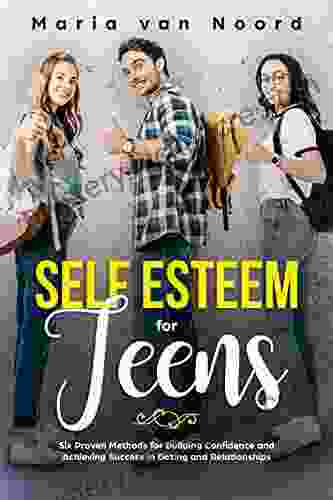
 Maurice ParkerSix Proven Methods For Building Confidence And Achieving Success In Dating...
Maurice ParkerSix Proven Methods For Building Confidence And Achieving Success In Dating...
 Jules VerneThe Gentleman's Guide to Conduct: A Comprehensive Treatise on Etiquette and...
Jules VerneThe Gentleman's Guide to Conduct: A Comprehensive Treatise on Etiquette and...
 Curtis StewartPirates By The Numbers: A Comprehensive Statistical Exploration of the Golden...
Curtis StewartPirates By The Numbers: A Comprehensive Statistical Exploration of the Golden... Henry David ThoreauFollow ·10.8k
Henry David ThoreauFollow ·10.8k Frank ButlerFollow ·18.4k
Frank ButlerFollow ·18.4k Edwin CoxFollow ·16.6k
Edwin CoxFollow ·16.6k Cameron ReedFollow ·3.1k
Cameron ReedFollow ·3.1k Brayden ReedFollow ·13.1k
Brayden ReedFollow ·13.1k Glen PowellFollow ·9.3k
Glen PowellFollow ·9.3k Ken FollettFollow ·15.9k
Ken FollettFollow ·15.9k Evan SimmonsFollow ·16.1k
Evan SimmonsFollow ·16.1k

 Henry David Thoreau
Henry David ThoreauHow To Bake In Unique Way: Unleash Your Culinary...
Baking is an art form that transcends the...

 F. Scott Fitzgerald
F. Scott FitzgeraldAcademic Magic: Unveil the Secrets of The Last Magus
Delve into a Realm of...
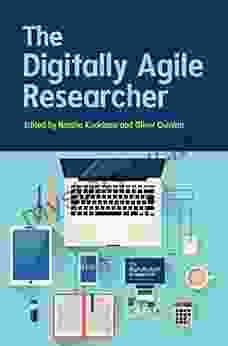
 John Green
John GreenThe Digitally Agile Researcher in UK Higher Education:...
In the rapidly...

 George Orwell
George OrwellZinc: Sources And Significance To Human Health
Zinc, an essential trace mineral, plays a...

 Mario Simmons
Mario SimmonsToo Scared to Tell: A Harrowing and Thought-Provoking...
In the realm...
4.5 out of 5
| Language | : | English |
| File size | : | 6703 KB |
| Text-to-Speech | : | Enabled |
| Screen Reader | : | Supported |
| Enhanced typesetting | : | Enabled |
| X-Ray | : | Enabled |
| Word Wise | : | Enabled |
| Print length | : | 193 pages |


